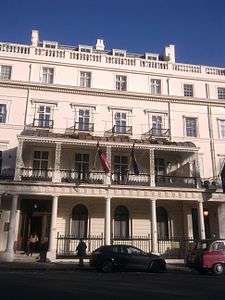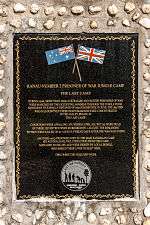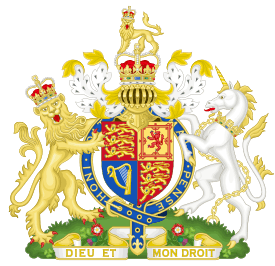Malaysia–United Kingdom relations
 |
|
Malaysia |
United Kingdom |
|---|---|

Malaysia–United Kingdom relations (Malay: Hubungan Malaysia – United Kingdom) refers to bilateral foreign relations between the two countries, Malaysia and the United Kingdom. The UK has a high commission in Kuala Lumpur, and Malaysia has a high commission in London, and both countries are full members of the Commonwealth of Nations.
History
English traders had been present in Malay waters since the 17th century. However, with the arrival of the British, European power became fully apparent in Malaysia. Before the mid 19th century, British interests in the region were predominantly economic, with little interest in territorial control. The growth of the China trade in British ships increased the Company’s desire for bases in the region. Various islands were used for this purpose, but the first permanent acquisition was Penang, leased from the Sultan of Kedah in 1786. This was followed soon after by the leasing of a block of territory on the mainland opposite Penang (known as Province Wellesley). In 1795, during the Napoleonic Wars, the British with the consent of the Netherlands occupied Dutch Malacca to forestall possible French interest in the area.
In 1824 British hegemony in Malaya (now Malaysia) was formalised by the Anglo-Dutch Treaty, which divided the Malay archipelago between Britain and the Netherlands. The Dutch evacuated Melaka and renounced all interest in Malaya, while the British recognised Dutch rule over the rest of the East Indies. By 1826 the British controlled Penang, Malacca, Singapore, and the island of Labuan, which they established as crown colonies of the Straits Settlements, administered first under the East India Company until 1867, when they were transferred to the Colonial Office in London. On the other hand, White Rajahs (founded by British adventurer James Brooke) ruled Sarawak from 1841 to 1946. Sarawak would later be a British Crown Colony until it merged with Malaysia in 1963.
In 1944, the British drew up plans for a Malayan Union, which would unite the Federated and Unfederated Malay States, but not Singapore, into a single Crown colony, with a view towards independence. It was established in 1946, and was dissolved in 1948 to be replaced by the Federation of Malaya.
The federation became independent from the United Kingdom in 1957, while North Borneo and Sarawak joined the Federation of Malaya to form Malaysia in 1963.
State visits

The Yang di-Pertuan Agong Sultan Abdul Halim of Kedah paid a state visit to the UK in July 1974.[1] The Yang di-Pertuan Agong Sultan Azlan Shah of Perak paid a state visit to the United Kingdom in November 1993.[1]
HM Queen Elizabeth II of the United Kingdom paid state visits to Malaysia in October 1989 and September 1998.[2]
David Cameron, Prime Minister of the UK visited Malaysia in the first half of 2012 as part of his Asia tour.
Prince William, the Duke of Cambridge and his wife Kate Middleton, the Duchess of Cambridge visited Malaysia from 13–16 September 2012, as part of a nine-day tour through Commonwealth countries in Southeast Asia and the Pacific to celebrate Queen Elizabeth's Diamond Jubilee.
Military links
The United Kingdom maintains relations with Malaysia's Ministry of Defence and the Malaysian Armed Forces. This relation began during the colonial rule of Malaya and Singapore prior to Malaya's independence in 1957, including the confrontations between the ruling government and communist forces.
Both the UK and Malaysia are part of the Five Powers Defence Arrangements.
Gallery
 Memorial for 641 British servicemen who died on the Sandakan Death Marches and at Ranau, Sabah, Malaysia from 1943-45.
Memorial for 641 British servicemen who died on the Sandakan Death Marches and at Ranau, Sabah, Malaysia from 1943-45. The Last POW Camp Memorial in Ranau, Sabah, Malaysia dedicated to Australian and British soldiers who died during the tragedy on the Sandakan Death Marches.
The Last POW Camp Memorial in Ranau, Sabah, Malaysia dedicated to Australian and British soldiers who died during the tragedy on the Sandakan Death Marches. Three flags dedicated to Australian, British and New Zealanders soldiers in Kundasang War Memorial, Ranau, Sabah, Malaysia.
Three flags dedicated to Australian, British and New Zealanders soldiers in Kundasang War Memorial, Ranau, Sabah, Malaysia.
References
- 1 2 "Ceremonies: State visits". Official web site of the British Monarchy. Retrieved 26 November 2008.
- ↑ "OUTWARD STATE VISITS MADE BY THE QUEEN SINCE 1952". Official web site of the British Monarchy. Retrieved 26 November 2008.

